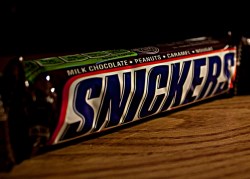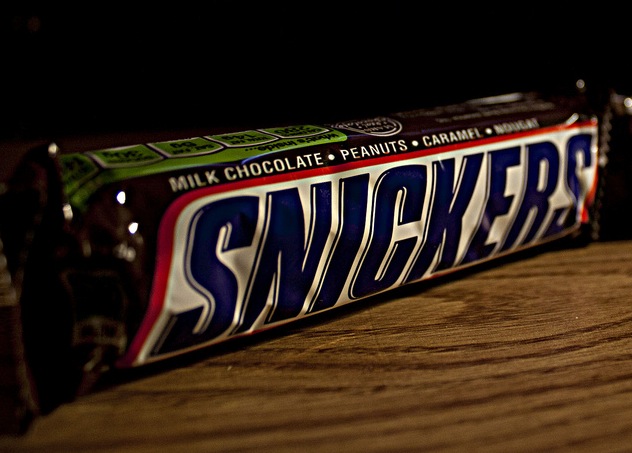
Snorkler17“Ooh, green nutritional information — how healthy this Snickers must be!”
Here’s a question that should be easy to answer. Which is more healthful: A candy bar with a green nutritional information label or a candy bar with a white one?
(Ignore, for the moment, that the very notion of “nutritional” is a farce when it comes to diabetes- and obesity-inducing candy bars.)
The color of the label is obviously irrelevant. But green nutritional panels — which now adorn Snickers, M&M’s, and other candies made by Mars — appear to fool shoppers into thinking they’re buying something that’s more healthful, according to a research paper published last month in the journal Health Communication.
Cornell University professor Jonathon Schuldt conducted experiments that found not only that green labels increase the perceived healthfulness of foods, but that such misunderstandings were particularly prevalent among those who place high importance on healthy eating.
“The green calorie labels buffer relatively poor nutrition foods from appearing less healthful among those especially concerned with healthy eating,” said Schuldt, who thinks it’s high time that the government stepped in to bar such trickery. “As government organizations including the U.S. Food and Drug Administration consider developing a uniform front-of-package labeling system for the U.S. marketplace, these findings suggest that the design and color of the labels may deserve as much attention as the nutritional information they convey.”



